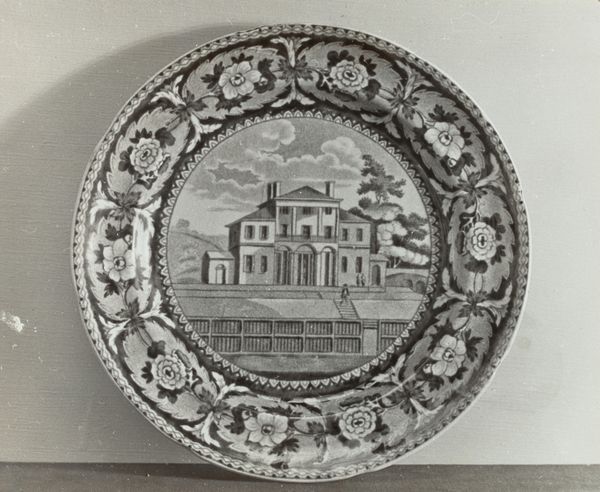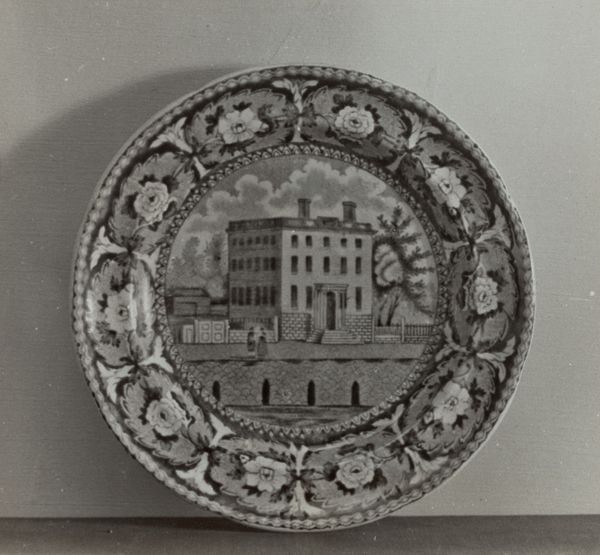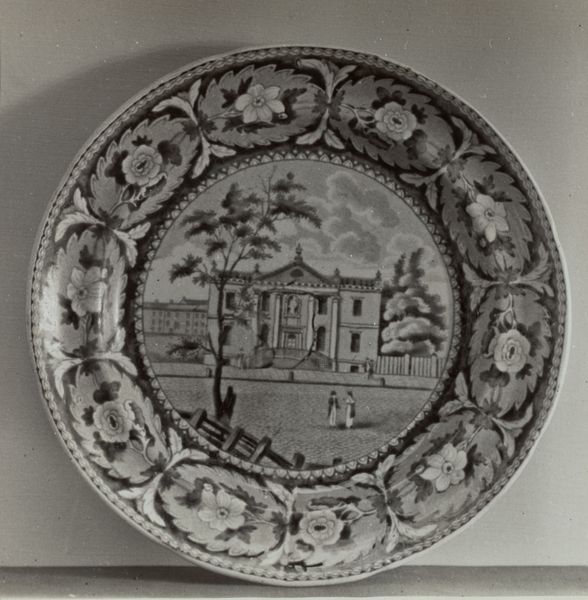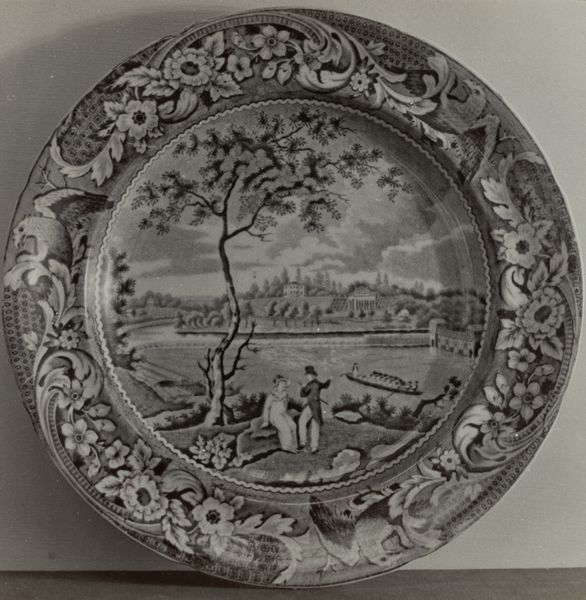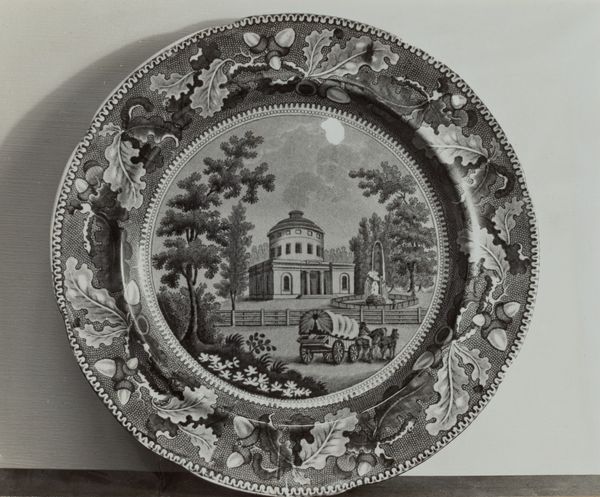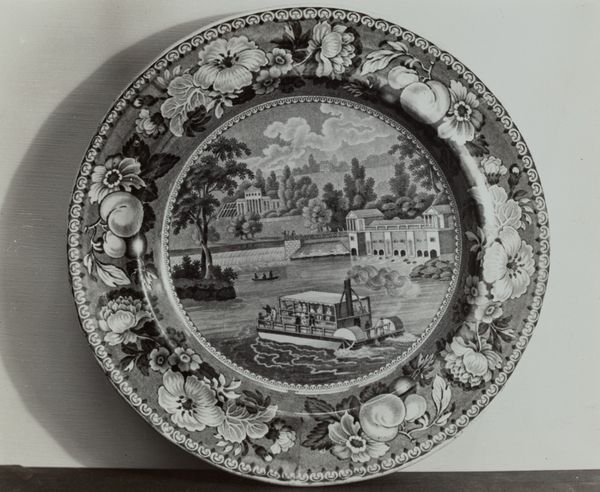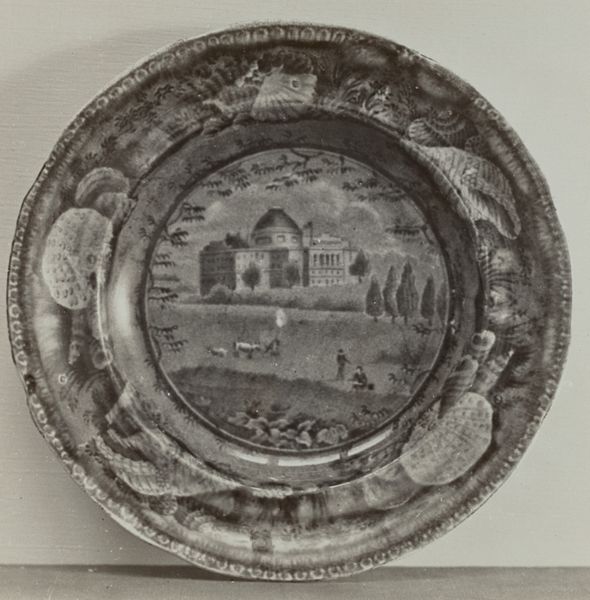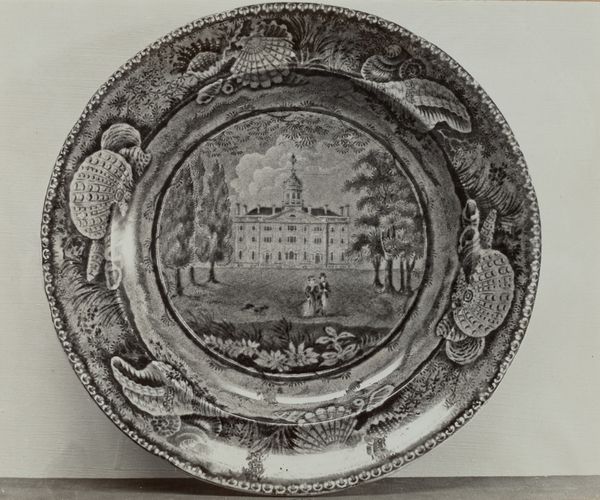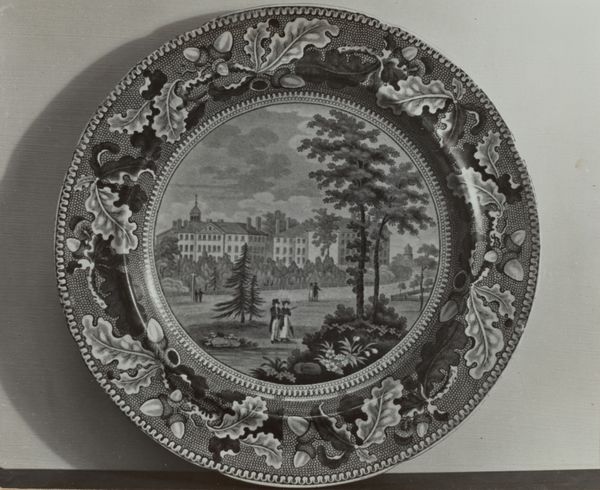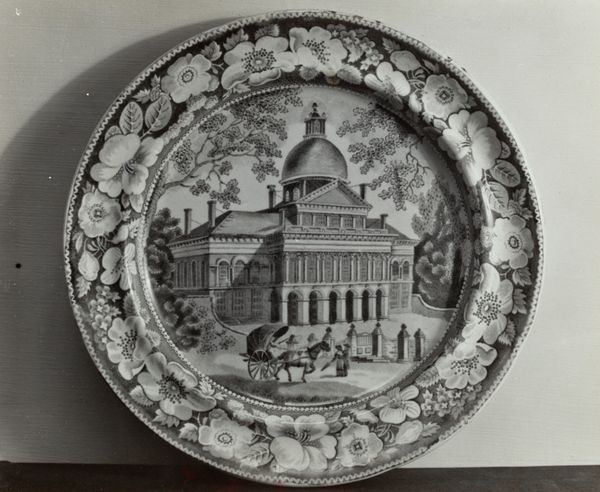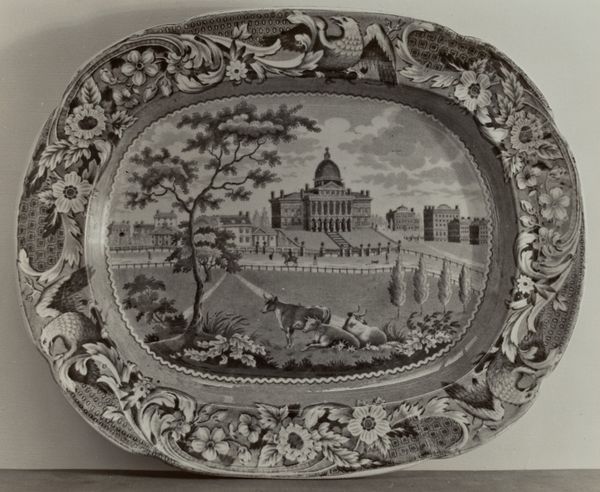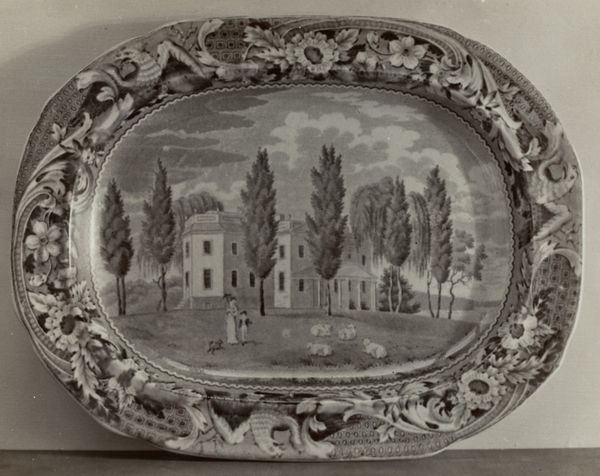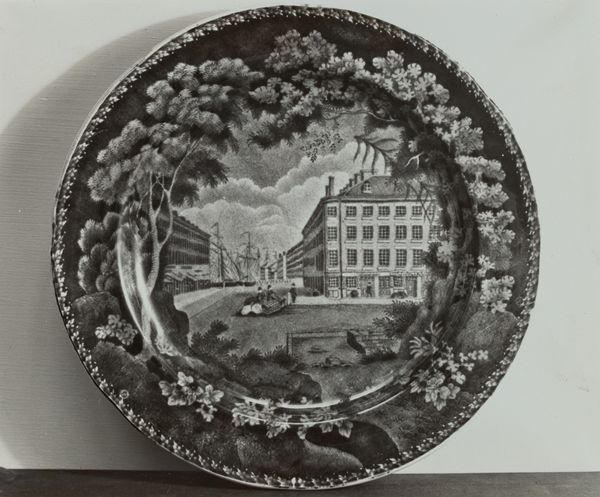
drawing, print
#
drawing
#
decorative element
# print
#
sculpture
#
landscape
#
charcoal art
#
cityscape
#
decorative-art
#
charcoal
Dimensions: overall: 20.3 x 25.4 cm (8 x 10 in.) Original IAD Object: 9 3/4" in diameter
Copyright: National Gallery of Art: CC0 1.0
Curator: Helmut Hiatt's plate, "Octagon Church, Boston," created around 1936, offers a fascinating glimpse into American decorative arts of the period. Editor: My first thought? There's a deliberate tension here. The crisp lines of the architecture set against the softer, almost romantic floral border feels very purposeful. It immediately sparks questions about audience, about use. Curator: Exactly! The very medium is worth noting – it elevates an everyday object by incorporating iconic architectural imagery, in this case a specific Boston church. Given the time it was made, and the presence of the decorative flowers it is evocative of mass-produced items affordable across economic strata and for middle class families. The print, which has the affect of charcoal art, placed on the dish blurs the lines between mass culture and high art. It asks: who does the decorative arts serve, who benefits and what does this mean in a Depression era USA? Editor: The materiality absolutely underscores that. It's not just about visual representation, but about consumption, accessibility, the physical act of using and interacting with art in the home. One wonders the type of labor to create this plate. What does its creation indicate? It speaks to larger structures and processes involved in its manufacturing and distribution, even more when one thinks of how the final buyer's perspective of luxury changes given it mass creation! Curator: That’s a compelling interpretation. It reframes how we engage with architectural depictions, suggesting they weren’t just passive representations of buildings or places, but symbols embedded within complex social and economic relationships. It speaks to an ever present discussion on race and the making of American artistic production. Editor: I agree. Hiatt asks us to rethink what it means to value and display architecture, connecting it directly to our everyday lives through these consumer goods. Curator: This challenges us to look beyond surface aesthetics and grapple with the multifaceted roles objects play in shaping our perceptions and power structures. Editor: Right. Analyzing “Octagon Church, Boston” in that framework unveils the social forces at play in defining what art can be and for whom it exists. The octagonal shape provides an intersection of multiple lines that converge. Who builds? Who profits? who is served? Curator: So, the next time you look at decorative art of the 30s, consider it within this intricate dance between creation, representation, and societal constructs. Editor: Precisely. What appears simple on the surface invites us to ask difficult questions. That's the mark of successful, and useful, art.
Comments
No comments
Be the first to comment and join the conversation on the ultimate creative platform.
